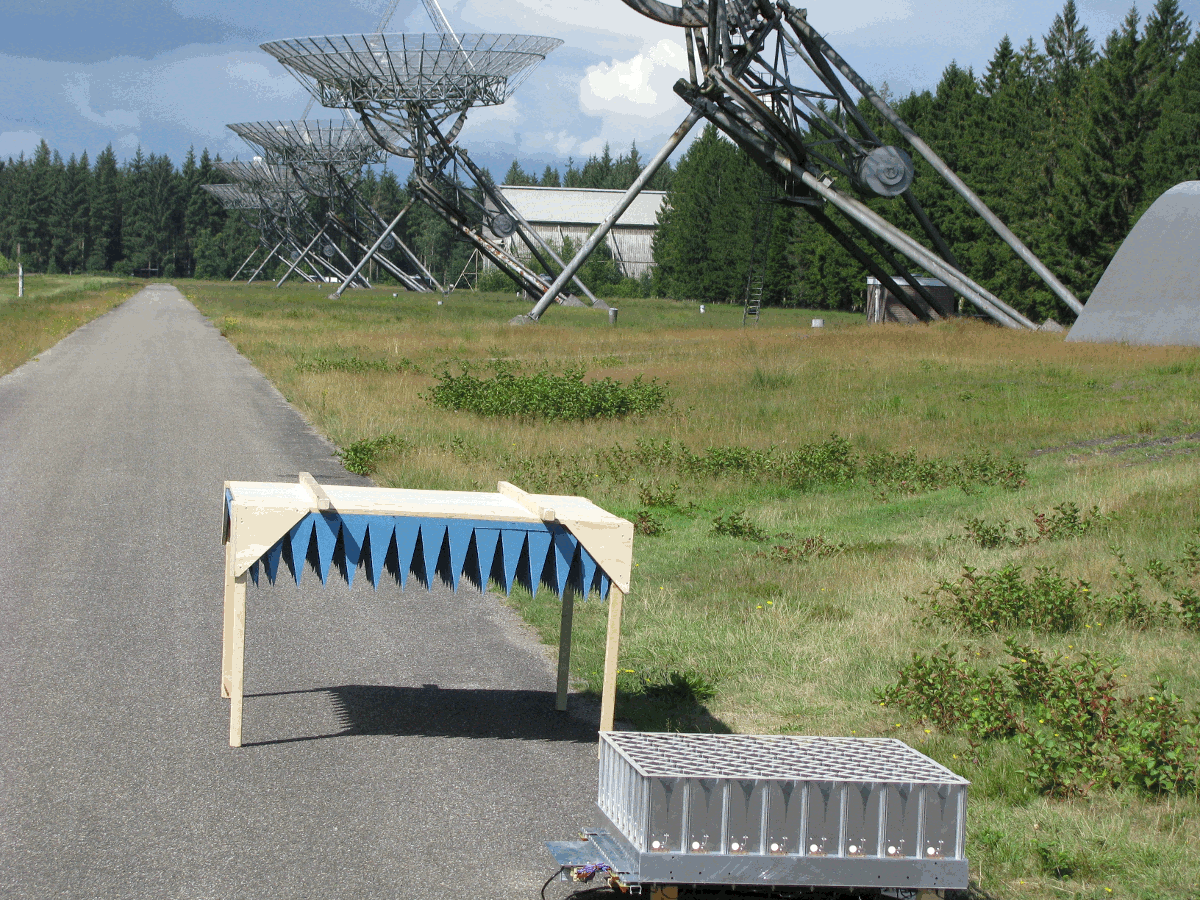Daily Image
06-08-2010Aperture array demonstrates system noise temperatures below 50 K
| Submitter: | Bert Woestenburg, Laurens Bakker |
| Description: | The properties and merits of the Digestif prototype array system for Apertif have been widely advertised, also on previous AJDIs. Impressive results have been demonstrated for the sensitivity of the array, in particular for the predicted, as well as the measured system noise temperature as Phased Array Feed in one of the telescopes of the WSRT (e.g. see AJDI of 25-09-2009). These results hold great promise for the application of the Digestif array hardware as a building block for an aperture array with low noise performance. On the basis of analysis of the noise performance of Digestif, one might expect noise temperatures close to and even below 50 K, when used as an aperture array tile. Recently, hot/cold noise measurements of Digestif as an aperture array tile in the 1-1.8 GHz range have shown that, with the present hardware, system noise temperatures below 50 K are indeed achieved. Measurements have been done with various beam configurations (using 4- and 16-element beams, both with analog and digital beam forming, as well as digitally formed beams using 25 and 49 elements). Measured noise temperatures for an array with 25 active elements (leaving out the edge elements of the tile) are presented in one of the accompanying figures, showing a remarkably flat noise temperature across the frequency band. The other picture shows the Digestif tile, as used for the hot/cold noise measurements in which the sky is used as a cold load. The ‘hot’ load room temperature absorber is shown separately and is placed over the array for the ‘hot’ measurement. The WSRT telescopes in the background reveal the location of the measurement site, with part of the EMBRACE radome visible to the right. The presented results are for a broadside beam (looking at the zenith). A next immediate step is to process the measured data in such a way that the effect of beam steering on the array noise temperature can be determined and compared to simulation results. In the longer term further improvement in noise temperature may be expected by reducing LNA and other system noise contributions. The present results illustrate the low noise potential of aperture array systems for application in the SKA. |
| Copyright: | ASTRON |
| Tweet |  |
